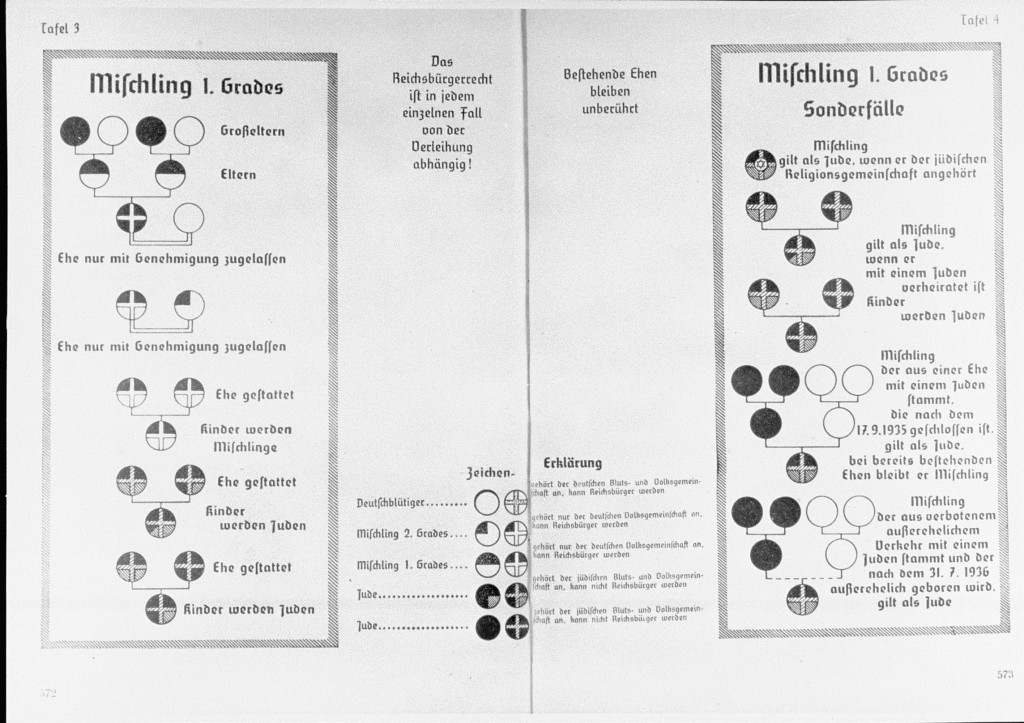
Antisemitism in History: Racial Antisemitism, 1875–1945
With the development during the last quarter of the nineteenth century of technological progress and scientific knowledge, especially about human biology, psychology, genetics, and evolution, some intellectuals and politicians developed a racist perception of Jews. This perception developed within a broader racist view of the world based on notions of "inequality" of "races" and the alleged "superiority" of the "white race" over other "races."
Belief in the superiority of the "white race" was both inspired and reinforced by the contact of European colonist-conquerors with native populations in the Americas, Asia, and Africa, and buttressed as pseudo-science by a perversion of evolutionary theory known as "social Darwinism." "Social Darwinism" postulated that human beings were not one species, but divided into several different "races" that were biologically driven to struggle against one another for living space to ensure their survival. Only those "races" with superior qualities could win this eternal struggle which was carried out by force and warfare. Social Darwinism has always been the product of bogus science: to this day, despite a century and a half of efforts by racists to find it, there is no biological science to support social Darwinist theory.
These new "antisemites," as they called themselves, drew upon older stereotypes to maintain that the Jews behaved the way they did—and would not change—because of innate racial qualities inherited from the dawn of time. Drawing as well upon the pseudoscience of racial eugenics, they argued that the Jews spread their so-called pernicious influence to weaken nations in Central Europe not only by political, economic, and media methods, but also literally by "polluting" so-called pure Aryan blood by intermarriage and sexual relations with non-Jews. They argued that Jewish "racial intermixing," by "contaminating" and weakening the host nations, served as part of a conscious Jewish plan for world domination.
Though secular racists drew upon religious imagery and stereotypes to define hereditary Jewish "behavior," they insisted that alleged Jewish "traits" were handed down from generation to generation. Since "Jews" did not form a religious group, but a "race," the conversion of an individual Jew to Christianity did not change his racial "Jewishness" and was therefore by nature an insincere conversion.
In the late nineteenth century in Germany and Austria, politicians took advantage of both traditional and racist antisemitism to mobilize votes as the electoral franchise widened. In his political writings during the 1920s, Adolf Hitler named two Austrian politicians who most influenced his own approach to politics: Georg von Schönerer (1842–1921), and Karl Lüger (1844–1910). Schönerer brought the racist antisemitic style and content to Austrian politics in the 1880s and 1890s. Lüger was elected mayor of Vienna, Austria, in 1897, not only because of his antisemitic rhetoric, which for him was primarily a political tool, but because of his oratorical skills and populist charisma that permitted him to communicate his message to broad sectors of the population.
Critical Thinking Questions
How did Nazi antisemitism build on previous beliefs and attitudes?
How was Nazi antisemitism different than previous hatreds of Jews?
Why do people generalize characteristics for an entire group? How can this be dangerous?
How can deep-seated hatreds be countered?
How can knowledge of the events in Germany and Europe before the Nazis came to power help citizens today respond to threats of genocide and mass atrocity in the world?

